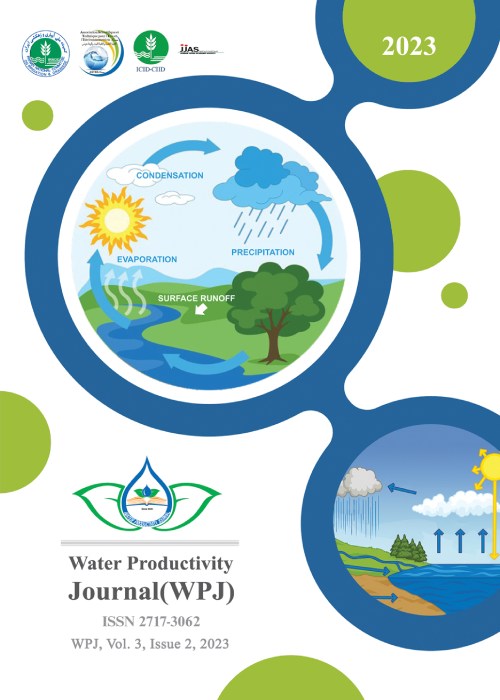Water Security and Gender Disparity: Indian Scenario
Author(s):
Article Type:
Research/Original Article (بدون رتبه معتبر)
Abstract:
Introduction
The UN SDGs are a collection of 17 global goals set in 2015 by the United Nations General Assembly intended to be achieved by 2030. Ensuring universal and equitable access to safe and affordable drinking water for all by 2030 is the target outlined by SDG 6.1. The indicator for measuring the same is the proportion of population using safely managed drinking water services. In 2017, only 71 per cent of the global population used safely managed drinking water, an increase from 61% in 2000, leaving 2.2 billion people without safely managed drinking water, including 785 million without even basic drinking water. Also, in 2017, 90% of the world’s population (6.8 billion people) used at least basic drinking water services, rising from 82% (5 billion people) in 2000. It is estimated that at this rate, global coverage would be around 96% still following short of the universal access. This goal is far from being realized in the case of the Indian subcontinent which accounts for approximately 17.8% of the world population. As per international standards, a country with per-capita water availability less than 1700 m3 is categorized as water stressed. According to the 2011 census India had a per capita water availability of 1543m3 which is projected to further decline to 1401m3 by 2025. Also India has a water stress score of 4.12 on a scale of 0-5 provided by the World Resources Institute. Moreover, there exists huge inequality in the distribution of access to water across states as well as difference strata of the population.Materials and Methods
This paper uses household survey data from India to determine factors which outline the choice of drinking water source. We use the definitions from the World Health Organization (WHO) and divide the water sources into 3 broad categories: piped, improved and unimproved. It is a large-scale, multi-round survey conducted in a representative sample of households throughout India. The dataset comprises of 601, 509 households with around 699, 686 individuals. The survey has detailed information on various indicators like child mortality, nutrition indicators as well as characteristics of household members, household wealth and assets, location of source of water, person collecting water et cetera.Results and Discussion
The results highlight that household income is an important determinant and positively affects the choice of a better water source. Other significant factors include gender and schooling of household head. While for number of women of age group 15-49, there is clear trend throughout, having positive association with choosing an improved water source and negative association with choosing an unimproved water source, the number of men in the age group 15-59 is negatively associated with choosing an improved water source in rural areas but not significant for any water source when looked at urban India. Policies that augment household income could provide for a better source of drinking water. The wealth effect appears to be larger for urban India. The majority of water collection is done by women and girl child and thus any benefits from investments in such policies will be greatest for this segment of the population. Since the data shows around 10% of the households to be still using unimproved drinking water sources, India as a long way to go so that it is able to achieve the target of safe drinking water for all by 2030.Conclusions
Education of household head is seen to be positive and significant with using a piped water connection when looking at India as a whole. Higher educational attainment means more empowerment and knowledge of the best health practices. Individuals feel powerless when they have limited opportunity to bargain owing to low levels of education. Educated heads realise the potential health benefits of improved quality of water, especially for women and girls. It also plays important role in children’s school performance as fewer illnesses mean reduced absenteeism and dropout rates.Keywords:
Water source , Improved , India , Rural , urban
Language:
English
Published:
Water Productivity Journal, Volume:2 Issue: 3, Summer 2022
Pages:
63 to 82
magiran.com/p2546891
دانلود و مطالعه متن این مقاله با یکی از روشهای زیر امکان پذیر است:
اشتراک شخصی
با عضویت و پرداخت آنلاین حق اشتراک یکساله به مبلغ 1,390,000ريال میتوانید 70 عنوان مطلب دانلود کنید!
اشتراک سازمانی
به کتابخانه دانشگاه یا محل کار خود پیشنهاد کنید تا اشتراک سازمانی این پایگاه را برای دسترسی نامحدود همه کاربران به متن مطالب تهیه نمایند!
توجه!
- حق عضویت دریافتی صرف حمایت از نشریات عضو و نگهداری، تکمیل و توسعه مگیران میشود.
- پرداخت حق اشتراک و دانلود مقالات اجازه بازنشر آن در سایر رسانههای چاپی و دیجیتال را به کاربر نمیدهد.
In order to view content subscription is required
Personal subscription
Subscribe magiran.com for 70 € euros via PayPal and download 70 articles during a year.
Organization subscription
Please contact us to subscribe your university or library for unlimited access!


